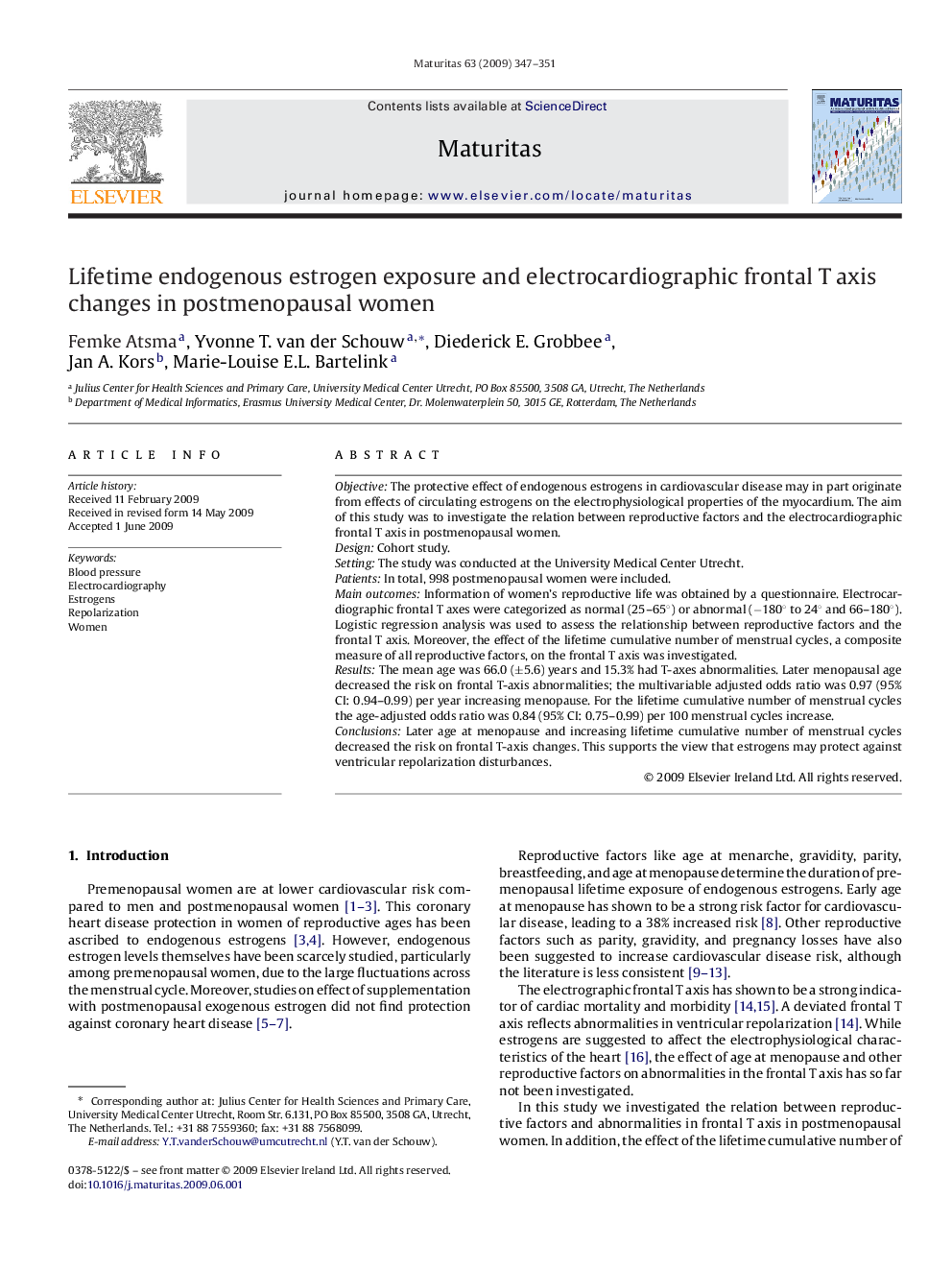| Article ID | Journal | Published Year | Pages | File Type |
|---|---|---|---|---|
| 1918277 | Maturitas | 2009 | 5 Pages |
ObjectiveThe protective effect of endogenous estrogens in cardiovascular disease may in part originate from effects of circulating estrogens on the electrophysiological properties of the myocardium. The aim of this study was to investigate the relation between reproductive factors and the electrocardiographic frontal T axis in postmenopausal women.DesignCohort study.SettingThe study was conducted at the University Medical Center Utrecht.PatientsIn total, 998 postmenopausal women were included.Main outcomesInformation of women's reproductive life was obtained by a questionnaire. Electrocardiographic frontal T axes were categorized as normal (25–65°) or abnormal (−180° to 24° and 66–180°). Logistic regression analysis was used to assess the relationship between reproductive factors and the frontal T axis. Moreover, the effect of the lifetime cumulative number of menstrual cycles, a composite measure of all reproductive factors, on the frontal T axis was investigated.ResultsThe mean age was 66.0 (±5.6) years and 15.3% had T-axes abnormalities. Later menopausal age decreased the risk on frontal T-axis abnormalities; the multivariable adjusted odds ratio was 0.97 (95% CI: 0.94–0.99) per year increasing menopause. For the lifetime cumulative number of menstrual cycles the age-adjusted odds ratio was 0.84 (95% CI: 0.75–0.99) per 100 menstrual cycles increase.ConclusionsLater age at menopause and increasing lifetime cumulative number of menstrual cycles decreased the risk on frontal T-axis changes. This supports the view that estrogens may protect against ventricular repolarization disturbances.
